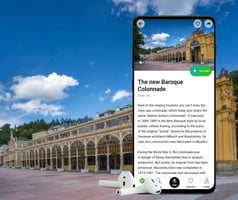Digital audio guides are making far-reaching positive-impact changes in the tourism sector by...
Conventional vs. digital audio guides: What's the best audio guide option for your visitors
In today's changing world of tourism, it's important to adapt and embrace technology to stay relevant. Museums, exhibitions, cultural sites, and other tourist attractions have realized this, and are now exploring modern ways to provide visitors with new immersive and interactive experiences. One such innovation is the advancement of digital audio guides, which offer a more modern and flexible alternative to their conventional, device-bound counterparts. In this blog post, we'll compare conventional audio guides to digital audio guides, to see which is better in enhancing the visitor experience.
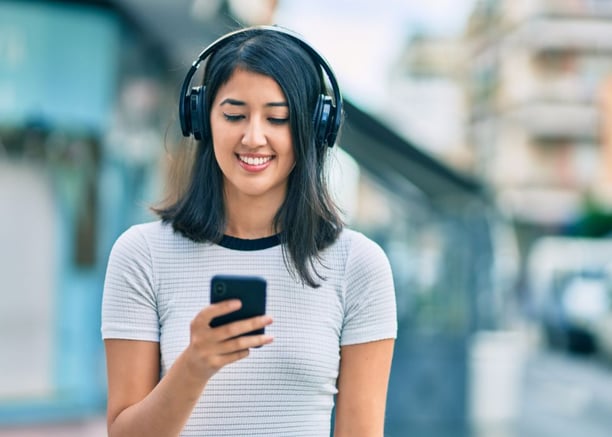
What is an audio guide?
An audio guide is a special audio device or a digital platform viewed on a mobile phone or tablet that provides audio content to educate and inform visitors and guide them around their surroundings. Audio guides typically include voice-over narration, music, sound effects, and other background sounds to enhance the narrative experience.
Audio guides can be used by individuals or groups, in museums, galleries, outdoor spaces, and single-entry-point tourist attractions. The list of tourist attractions that provide an official audio guide is almost endless - it includes the Acropolis in Athens, the Great Wall of China, the Taj Mahal in Agra (India), Christ the Redeemer statue in Brazil, Stonehenge in England, Machu Picchu in Peru, Chichen Itza in Mexico, to name a few. Audio guides are popular for a reason - they provide an effective way of engaging visitors while providing them with useful information about the sights and exhibits they are passing.
In addition, audio guides offer a self-guided, individualized experience, allowing visitors to explore the destination or attraction at their own pace and according to their interests.
The history of audio guides
Audio guides have been around for quite some time, and they have evolved considerably over the years. The first audio guide in a tourist attraction, in a modern sense, was introduced in 1952 in the Stedelijk Museum in Amsterdam, Netherlands. Initially, it used a closed-circuit shortwave radio broadcasting system. This particular audio guide system was based on a broadcast station made of an analog playback tape recorder that amplified audio output and transmitted it via a loop aerial fixed around the museum. Identical audio content in various languages recorded onto magnetic tapes was broadcast through the aerial. When inside the loop, visitors picked up the audio through portable radio receivers with headphones.1
With the advancement of technology, radio and cassette-based systems started to be slowly replaced by digital audio guides.
Nowadays, there are basically two types of audio guides in use for guiding visitors: Conventional audio guides bound to a special device, and digital audio guides that use personal devices such as phones or tablets.
Wondering which of the two types should one choose from for your tourist destination or attraction? Let's dive in and explore the world of conventional and digital audio guides.
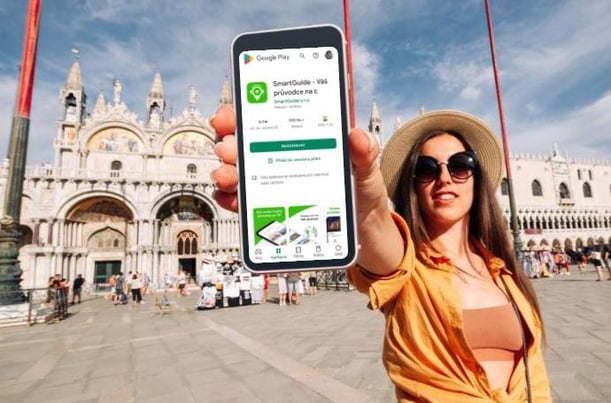
What are conventional audio guides?
A conventional, device-bound audio guide is an audio tour that is provided through the use of a special physical device. This type of audio guide gives visitors access to recorded content about the sights and points of interest they are passing. Such devices are typically rented to visitors onsite, have preloaded content, and allow visitors to select specific locations and topics to listen to during their visit.
Conventional audio guides have been prevalent in museums and other tourist places for decades. They typically used radio frequency (RF) technology to transmit the audio content. Older analog guides even used cassette tapes, however, due to their limited storage capacity and the risk of data loss, they are no longer widely used. They are now being replaced either by guide apps or dedicated digital devices.
Examples of conventional audio guides in use
Popular conventional audio guide examples include Acoustiguide, the former most well-known manufacturer of conventional tour audio guides. This personal audio guide was available at the Louvre Museum in Paris and used a cassette system to guide visitors through the museum's magnificent art and exhibits until it was replaced by a new Nintendo-3DS-based audio guide with geolocation tracking.
The British Museum in London also used to offer a conventional audio guide by VOX that visitors could rent for their visit (now replaced by a dedicated audio app visitors can download to their phones). So did the Metropolitan Museum of Art in New York City. Alcatraz Island in San Francisco is yet another attraction that still uses conventional audio guides on special hand-held devices to provide visitors with audio tours.
Conventional audio guide advantages
The primary advantage of conventional audio guides is that they provide audio guidance that doesn't need to rely on any external network connections. They have a single purpose, making them easy to operate.
However, conventional audio guides have some significant drawbacks; they can be unhygienic, heavy, and challenging to carry and sometimes limit the use of multiple languages. We have carried out a detailed comparison between the two audio guide types, which you will find below.
Despite the old-fashioned nature of conventional audio guides, they continue to be widely used as audio guide equipment in many museums worldwide due to their reliability, and also due to investments already made into the existing guide infrastructure.
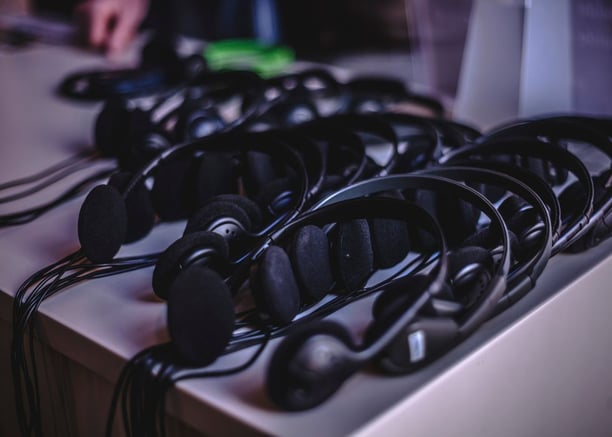
What are digital audio guides?
Digital audio guides are audio tours that are accessed through (personal) digital devices, such as smartphones and tablets. Unlike conventional, device-bound audio guides, digital audio guides do not require the use of headphones or any other external hardware.
Instead, visitors simply connect their device to a Wi-Fi network and access the audio tour via an app. Digital audio guides have become increasingly popular in recent years due to their cost, convenience, and portability.
Digital audio guide advantages
Digital audio guides provide greater flexibility and customization to visitors, particularly in terms of content catering to different audiences (for example, museums can easily provide different content for adults and for children). Visitors can also enjoy various multimedia content, including videos, images, interactive maps, and even augmented reality. Another significant advantage of digital audio guides is that they can provide layered, detailed information, and are available in multiple languages.
Improved network connectivity has made digital audio guides immune to poor network conditions, ensuring that visitors can access the content without any interruptions or buffering.
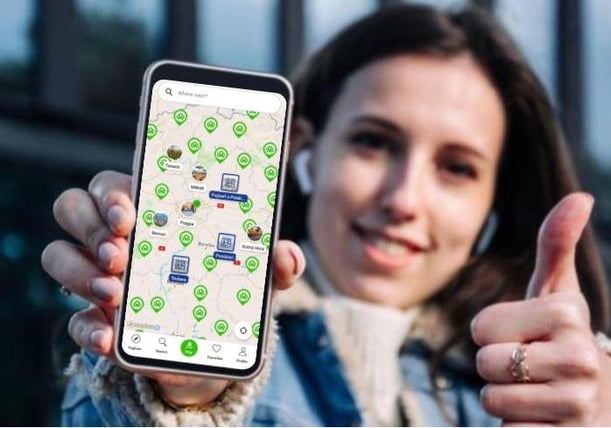
Examples of digital audio guides in use
One of the world's most popular digital audio guide platforms is SmartGuide which offers a vast collection of audio tours and offline maps. SmartGuide's audio tours lead visitors through fascinating stories, available in numerous languages.
Do you need an audio guide to navigate different audiences through the same space? SmartGuide allows the creation of customized parallel content that can serve, for example, adults and children with different narratives for the same points of interest. Children listen to engaging, age-appropriate stories and can enjoy them just as adults, who get more in-depth, factual information.
Accessibility issues for visitors are resolved with SmartGuide as well, as the content can be easily adjusted for visitors with sight or hearing impairments.
SmartGuide has become the favored digital audio guide solution for progressive tourist attractions, DMOs, and travel businesses. This digital audio guide platform already offers self-guided tours in almost 1000 destinations worldwide. The National Technical Museum in Prague, the Terezín Memorial, the popular Cosmos Discovery exhibition or the Pilsner Urquell brewery museum are just some examples where SmartGuide has enabled visitors to enjoy immersive experiences without having to wait hours for a guided tour in their language.
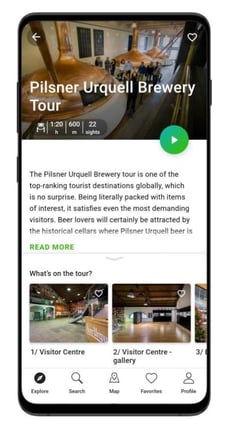
Comparison of conventional vs. digital audio guides
- Safety and hygiene: By eliminating the need for large guided tour groups and unclean conventional audio guide equipment, digital audio guides significantly reduced the risk of contracting diseases (such as during the Covid-19 pandemic) while visiting crowded sites. With the guidance provided by the app, visitors can avoid crowded areas, ensuring a continuous visitor flow. This not only helped comply with the Centers for Disease Control's guidelines but also generally enhances the overall visitor experience. Recognized for its excellent response to the Covid-19 pandemic, the SmartGuide app, for example, has received the Seal of Excellence from the European Commission.
- Sustainability: Many tourist spots (especially museums) still rely on outdated conventional audio guides that require physical devices and frequent maintenance, which can be wasteful and unsustainable in the long run. Digital audio guides and self-guided tours are more cost-effective, accessible from anywhere, provide greater freedom, and reduce the carbon footprint and visual pollution! For instance, SmartGuide's sustainable self-guided tours offer top-quality multimedia content that visitors can access anytime and anywhere, allowing them to explore popular tourist attractions on their own terms and away from crowds.
- Bridging the technology gap: Digital audio guides are gaining popularity also in countries where traditional audio tour guides are not common, but mobile device usage is extremely high (esp. in Asia). Offering an innovative way to bridge the gap between the old-school sightseeing experience and modern technology, digital audio guides present a unique opportunity to enhance the visitor experience. These guides are easy to use and cost-effective to implement, making them a valuable resource for travelers seeking dynamic and interactive ways to explore new destinations.
- Accessibility: Nearly one billion people, or 15% of the world's population, experience some form of disability, as per the World Bank. While mobility limitations may be the most obvious challenge, there are several hurdles to overcome to make destinations and tourist attractions universally accessible. With technologies such as digital audio guides, which utilize artificial intelligence (AI), augmented reality (AR), and multimedia tools, new doors can be opened for visitors with disabilities. Unlike conventional audio guides, Digital Audio Guides may offer various ways to access the same information - not just through audio, but also text, or video, supporting visitors with different needs.2
- Multifunctionality: Popular tourist destinations and attractions are improving visitors' experience by incorporating digital audio guides that offer a wealth of advanced features, such as multimedia content, interactive exhibits, and offline maps. Compared to conventional audio guides that are limited in their offerings, digital audio guides provide visitors with up-to-date and engaging multimedia content that make the visit more enjoyable and educational. As technology rapidly advances in society, conventional audio guides are becoming outdated and less useful, and digital audio guides are set to replace them as the new standard for visitors looking for a more immersive and dynamic experience.
- Customization: With digital audio guides, visitors can receive tailored recommendations that cater to their preferences, and real-time location. Providing custom recommendations can significantly increase visitor satisfaction levels and encourage visitors to stay longer and return again. Digital audio guides offer an efficient and affordable way for visitors to explore different areas, cultural sites, popular attractions, and other tourist places, regardless of the time or guided tour availability. By using modern technology tourist attractions can build stronger relationships with their customers and enhance their brand reputation.
- Generating revenues: Conventional audio guides, while still commonly utilized to guide visitors, have limitations in generating revenue streams. Unlike digital audio guides, these conventional guides rely on pre-recorded messages that can't be updated in a flexible way. This provides no additional opportunities for monetization, or promotional channels to target different types of visitors. In contrast, digital audio guides like SmartGuide offer more potential for tourism businesses to generate revenue by promoting their offerings to visitors based on their interests and real-time location.
- Big data on visitors' behavior: Being proactive with digital audio guides allows businesses to gather insights about visitor behavior that can be leveraged to optimize future revenue opportunities.
Choosing the right audio guide for visitors
Tourists today are hyperconnected prefer to use their personal devices, are more environmentally conscious, and value the preservation of natural and cultural heritage. They are also more independent and inclined to embark on self-guided tours.
Choosing the right audio guide for visitors depends on the 'modern' tourists' travel priorities, the location's availability of connectivity, and the overall budget. While both conventional and digital audio guides have their pros and cons, digital audio guides are undoubtedly the future of travel. As technology evolves, digital audio guides are likely to offer even more advanced features, functionality, and customizations.
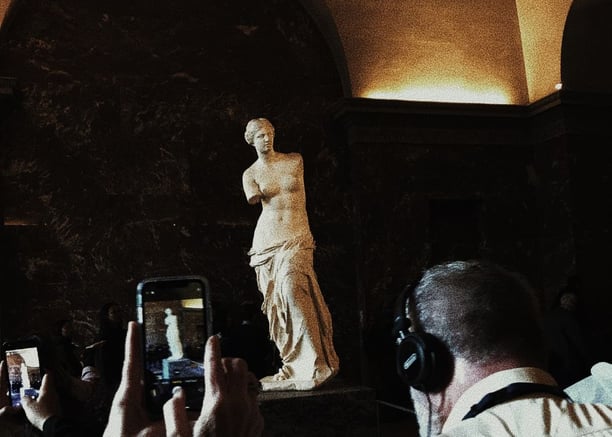
SmartGuide - The best digital audio guide for museums
SmartGuide is an excellent example of a digital audio guide platform that makes attracting and engaging visitors easier for destination marketing organizations (DMOs), tourist attractions, and tour operators alike. When it comes to museums, SmartGuide provides them with ready-made, cost-effective digital audio guide technology. It brings an immersive experience to visitors, augmented with interactive features, and advanced customization. It also helps ensure accessibility and a safe and inclusive environment for all visitors to explore. This digital audio guide is definitely worth the switch!
.png?width=300&height=69&name=Logo%20SmartGuide%20horizontal%20(1).png)
.jpg?width=578&height=325&name=CTA%20banners%20for%20SMG%20blog%20(9).jpg)
.jpg?width=578&height=325&name=CTA%20banners%20for%20SMG%20blog%20(3).jpg)
